Bodie Island Lighthouse

0
- Dangerously close to the Diamond Shoals off North Carolina’s Outer Banks, the sloop Thunderbolt, battered by a fierce storm and rough sea, catches fire from an overturned cook stove. All aboard scramble to put out the flames while trying to keep from being tossed overboard. The shoals, sand dunes just below the water’s surface, reach out some 18 miles past Hatteras Point. Hundreds of ships have run aground here, miles from shore, to be pulverized by the relentless waves... and often, all aboard drown.
On this day, a terrified 17-year old orphaned boy from St. Croix, on his way to an American education, is among those fighting to save the ship... he is Alexander Hamilton, who would get that education and become the first U. S. Secretary of the Treasury under President George Washington. Resting against the rails of the saved ship, he watches as the shoals recede away... and vows to one day do something so that others would not know such fear.
There was a reason ships were drawn near the shoals... wind-driven ships also relied on ocean current, which at times can move better than 40 mph. The Labrador Current sweeps down from the north and hugs this coast to about two miles off the beach. Beyond that is the Gulf Stream that moves up from the south toward the upper tier states. Often, it was faster for ships coming to Boston or New York from Europe to actually work their way south to catch the Gulf Stream than it was to come straight across the Atlantic. Even back in the day, folks in the shipping business knew that time is money. The confluence of the cold Labrador Current and the warm Gulf Stream also set up perfect conditions for violent storms and ocean swells. Add to that the shoals, which extended beyond sight of land in the midst of that confluence, and many an unwary ship’s captain left “money” to shift among the sands of these underwater dunes. Only jetsam and flotsam found on the beaches along the Outer Banks gave evidence of the fate of the ship.
As Secretary of the Treasury, Hamilton finally has the power to make good on his vows, and the U. S. Lighthouse Service, and eventually the U. S. Coast Guard fall under the auspices of the Treasury Department. The first lighthouses along the east coast were functional, if just barely, and were not constructed to the exacting standards you see here... there’s something to be said of building your house on shifting sand, as many of the early lighthouses here in North Carolina actually toppled shortly after construction. Under the supervision of Dexter Stetson, Hatteras Lighthouse rose up 210 feet from a foundation of granite, rubble, and entire lengths of pine pushed to the bedrock... and stayed up, as it has since 1870. With a focal plane at 187 feet, its light could be seen for 28 miles, well before a ship reached the shoals at night. Its conical tower with black and white spiral bands is visible by day on the horizon.
After his success at Hatteras, Stetson turned his attention here at Bodie Island. The name of the island is at contention, largely due to revisionist historians... the name is pronounced “body”, and is an archaic form of that word. Legend has it the name comes as a result of bodies washing ashore after some ship found its resting place in the of the Graveyard of the Atlantic. According to some historians, however, the name comes from a family that once lived here, though that has never been proven... the legend may not be so legendary, as such things did happen. A lighthouse would save lives here too.
There were two lighthouses located here previous to the one you see here. The first one leaned toward the sea shortly after it was built. That was in the day before electrical power, so the lighthouse had to be tended to every day... could you imagine having to climb up a structure so unstable that it might topple any second, at least twice a day? Me neither. It failed and was replaced, but Confederate troops blew the second one up in 1861 during a series of skirmishes as Yankee troops descended on Fort Fisher. The third installment of Bodie Island Lighthouse projected light from its first order Fresnel lens for the first time in 1872. At a height of 165 feet, its beam can still be seen 21 miles out to sea.
Though built on a land that shifts with the wind and tide, Bodie Island Lighthouse has withstood hurricanes, nor’easters, floods, lightning, heat, and humidity, but 148 years of such conditions had taken its toll. After much determination, restoration of the lighthouse began in 2010. The last of the project was the installation of the refurbished Fresnel lens early last year... after a re-lighting ceremony, the lighthouse was returned to service April 18, 2013. Seen here in morning light after 152 years, Bodie Island Lighthouse is every bit the historical standout in its new-paint splendor.
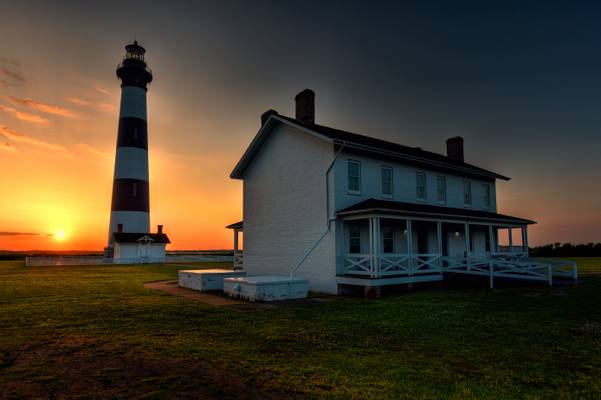
0
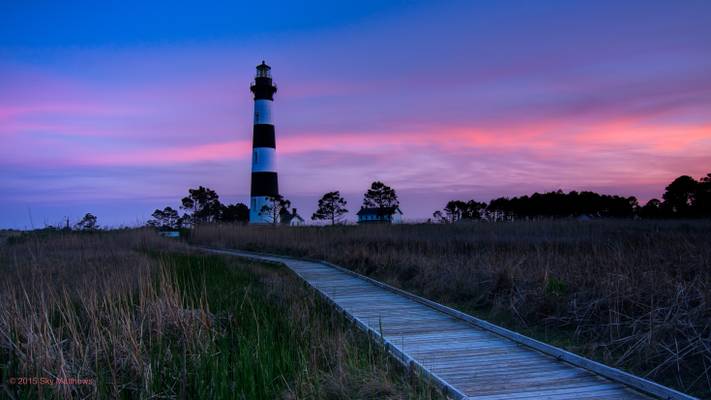
0
Sunset/twilight at the Bodie Island Lighthouse in the Outer Banks, North Carolina on a recent short trip to the coast with Kevin Benedict. As we...

0
It is always amazing to me the number of starts you can see on a clear night in a place with less light pollution. On a clear night at Bodie Island...
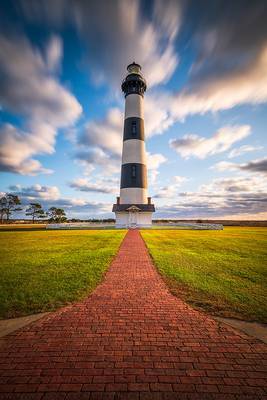
0
Icon - Coastal North Carolina Bodie Island Lighthouse Cape Hatteras National Seashore OBX NC
Truly an icon of the state of North Carolina, the Bodie...
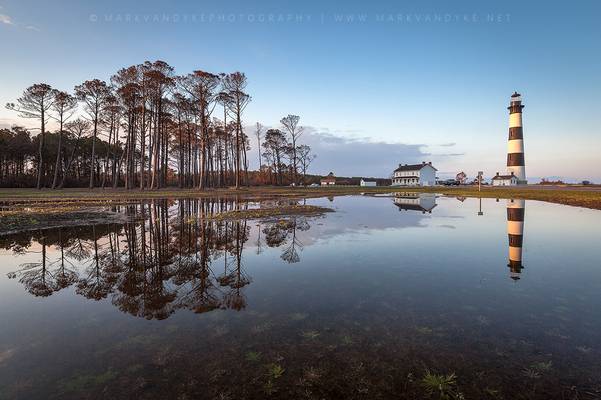
0
Bodie Island Light and Keepers House Dare County, Coastal North Carolina Accessed via Beach Highway NC-12 Date Taken: March 04, 2012 Visit me at: ...
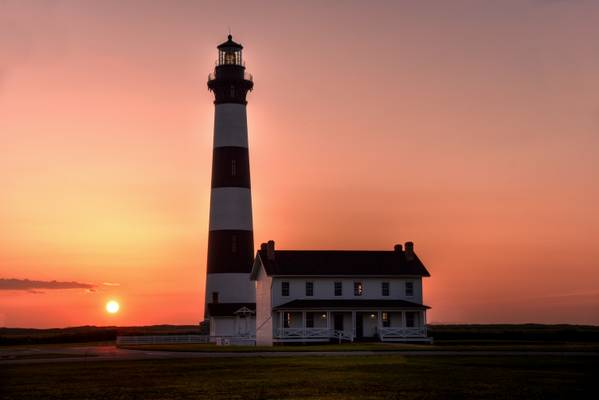
0
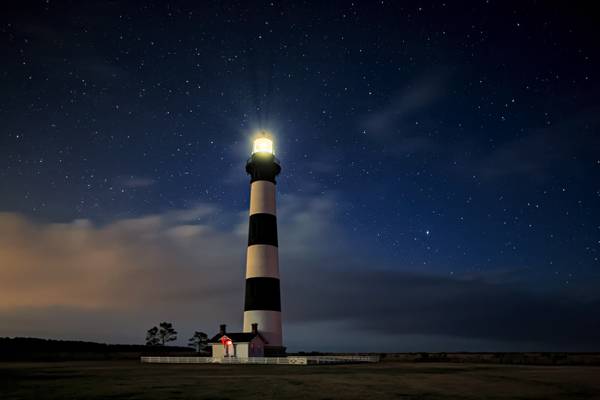
0
The Lone Ranger and Tonto were hot on the trail of a band of desperados. Riding in the desert for many days, the need for rest overcame them. They decided to set up camp and were soon asleep in their tent.
Some hours into the night, the Lone Ranger says, “Tonto, look up and tell me what you see.”
Tonto stirs and replies, “I see a million stars.”
“What does that tell you?”
Tonto ponders for a moment, then says, “Astronomically speaking, it tells me there are many stars spread out from our own galaxy, amid those of countless other galaxies, and potentially billions of planets. Astrologically, it tells me that Saturn is in Leo. Time wise, it appears to be approximately a quarter past three in the morning. Theologically, it tells that we are small and insignificant, but the Lord is all-powerful, and it is in Him that we find significance. Meteorologically, it seems we will have a beautiful day tomorrow. What does it tell you, Ke-mo Sah-bee?”
The Lone Ranger replies, “It tells me that someone stole our tent!”
A good rule of thumb for landscape photography is to find a strong foreground element to work with. A waxing quarter-moon setting low in the west lit up Bodie Island Lighthouse pretty solid against the backdrop of a decent portion of the Universe… I believe it fits the bill for a strong foreground.
It’s too early in the year for a good shot of the hub of the Milky Way, but this starfield is quite beautiful without it. This is one of the darkest places in North Carolina… Tonto may not have appreciated having his tent stolen here either, though he likely would have been quite happy with these stars. Since 1872, the light from this first-order Fresnel lens has been no less a star than those that surround it here. At 156-feet in height, it is a fixed navigational point reaching some nineteen miles out to sea, beyond the unseen shoals... and, historically, it has saved many a ship and crew from facing the fate of the Graveyard of the Atlantic off the shores of North Carolina’s Outer Banks.
Before the inception of this nation, young Alexander Hamilton was traveling aboard the Thunderbolt from his birthplace in the British Leeward Islands to New York for an education. Along the way, the ship encountered a storm off the coast of North Carolina in an area known as the Graveyard of the Atlantic. Without navigational aids, the ship was driven into the Diamond Shoals, sand dunes just below the ocean’s surface stretching 12 miles off Cape Hatteras. The Thunderbolt caught fire from the cook’s stove, yet through the storm, the crew was able to contain it. Many ships had been pulverized by relentless surf at the shoals, drowning hapless crew and passengers often within sight of land. The Thunderbolt managed to break loose, however, and continued its journey… but not before a thoroughly terrorized Alexander Hamilton vowed to one day do something about making these waters safer for travel.
Navigation in the days of wind-driven ships involved more than just shooting the sun and stars to determine location… knowledge of weather and ocean current was necessary to move those ships from one place to another in a timely manner. What wasn’t military was commercial… the faster the ships moved, the more profit they made. Ships coming to the colonies north of here from Europe would navigate further south off our Outer Banks to catch the Gulf Stream… they would pick up about 35 mph headed north in the Gulf Stream just off the coast, far faster than going directly port-to-port, but without precise navigation, many a ship found itself squarely in the path of the Diamond Shoals. Thankfully, Hamilton made good on his vow. He became the first Secretary of the Treasury under President George Washington. In that position, he established the Revenue Cutter Service, which would eventually become the U.S. Coast Guard… the Revenue Cutter Service was tasked with building lighthouses to safeguard the traffic at sea along the American coast. These navigational aids were identified by their blink rate at night and by their paint scheme by day. Any lost seafarer would recognize each lighthouse and the dangers it stood over.
In light of the world today, this is also quite symbolic to me. I’m reminded of an interview I saw of the late Chuck Colson (www.colsoncenter.org/) by Ted Koppel on Nightline some years ago. "Believing in absolutes doesn't make one an absolutist," wrote Colson about that TV interview where the Koppel accused him of being an absolutist.
Colson said, "When Ted asked me why Christians always try to cram our views down people's throats, I was getting nowhere. After all, he was the one who admonished the graduating class at Duke University in his commencement speech that the Ten Commandments were not the Ten Suggestions. Then I remembered he loved to sail.
'Have you ever sailed at night, navigating by the stars?' I asked. 'Yes,' he replied.
'Could you use those stars to navigate if they appeared in different, random positions every night?'
'Of course not,' he said slowly.
I think he got it. Christians are not intolerant absolutists. We just don't want our culture to be lost at sea, unaware of the stars above that could so quickly right our course."
I believe Tonto got his "Theologically" pertinent point just right.
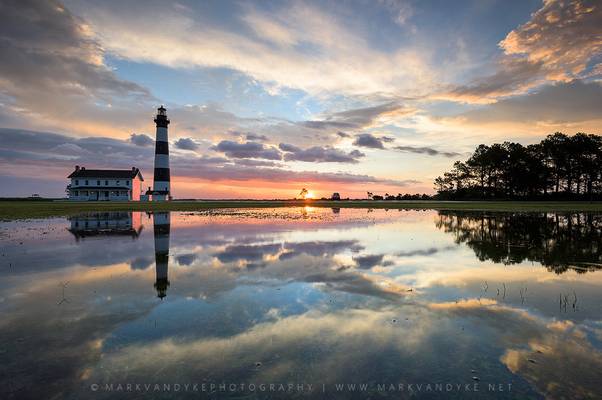
0
A Spectacular Sunrise at Bodie Island Lighthouse Dare County, Coastal North Carolina Accessed via NC-12 (Outer Banks Scenic Byway) Date taken: ...
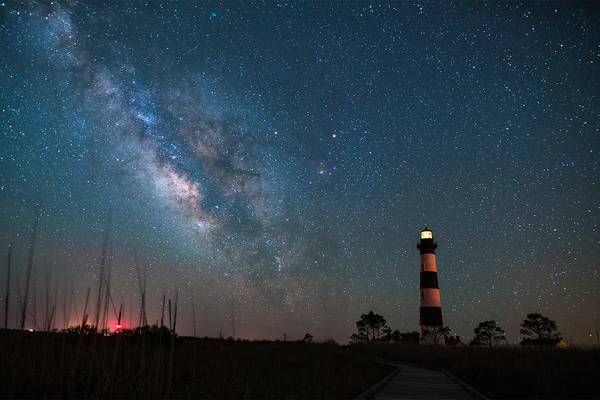
0
The Milky Way Rises into the night sky at Bodie Island Lighthouse in the Cape Hatteras National Seashore.
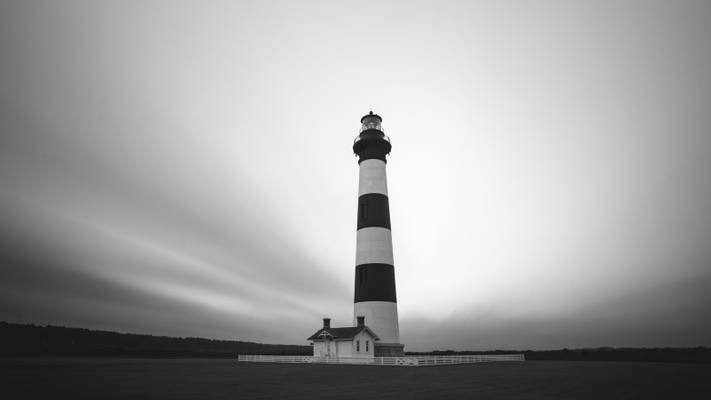
0
After the sun went down on the first day in the OBX, I was walking back to the car and realized that the clouds were still really moving across the...
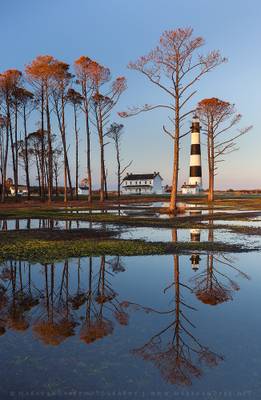
0
Bodie Island Lighthouse Dare County, Coastal North Carolina Accessed via NC-12, Outer Banks Scenic Byway Date Taken: March 04, 2012 Flickr Explore...
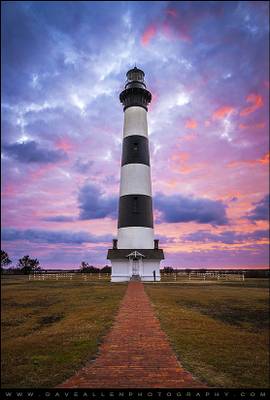
0
Bodie Island Lighthouse at sunrise on the Outer Banks of North Carolina. OBX as the Outer Banks are frequently called is an amazing place to visit,...
![Bodie Island Lighthouse-[EXPLORED]](https://cdn.phoide.com/Thumbs/26049779545.jpg)